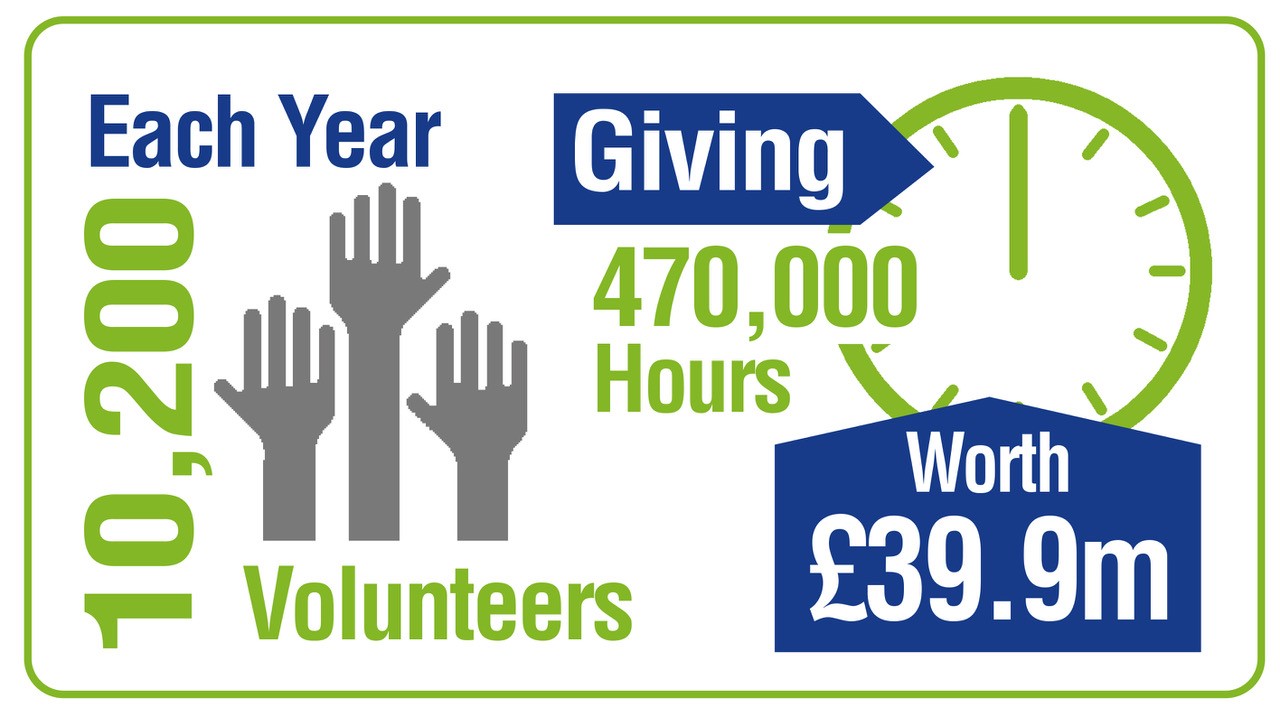What is community rail?
Community rail is grassroots, community-led movement, made up of community rail partnerships, ‘station friends’ volunteer groups, and other community groups, trusts, enterprises, and schools engaging with railways and stations in different ways.
Community rail delivers wide-ranging community engagement initiatives and community-led projects, which play an important role in social inclusion, wellbeing, community confidence and economic development. The movement promotes and widens access to rail as a key part of sustainable, healthy travel, while advising rail partners on local needs, helping communities get the most from their railways and have a voice on transport.
Around Britain, there are:
- 75+ community rail partnerships, small community-based organisations working along railway routes to connect communities with the railway, promoting their line(s) delivering empowering and enabling initiatives, and helping railway and transport partners put communities at the forefront.
- 1,200+ station friends or adoption groups made up of 10,000+ volunteers, bringing people together through volunteering, community gardening, arts projects and other community-led activities, and creating pride in stations and bringing them into the heart of community life.
- 100+ ‘community stations’ where the community has spearheaded the development and repurposing of station buildings and spaces, such as for social enterprises and community meeting spaces, turning these stations into thriving community hubs.
You can see where Britain’s community railway lines are, region by region, and their main attractions, on our Scenic Rail Britain site.
Find your nearest community rail partnership and station group on our interactive map.
The community rail movement is brought together under Community Rail Network’s supportive umbrella, sharing ideas and good practice, increasing impact, and championing the movement’s unique insights.
The value of community rail

Community rail delivers social, economic, and environmental impact, adding value at a local level, and supporting national strategies.
Boosting greener journeys by rail, and enhancing local environments
- Community rail promotes awareness, confidence and positivity around rail and removes barriers to travel.
- Railway lines with community rail partnerships consistently saw stronger passenger growth than lines without in the 10 years to 2018.
- Passenger journeys on railway lines with community rail partnerships have recovered faster since the Covid pandemic.
- At the end of December 2022, journeys made on community rail partnership lines stood at 82% of pre-Covid levels, compared to 79% across the network.
- A huge range of community rail initiatives have been shown to impact on people’s confidence and propensity to use the railways, in some cases changing lives by increasing access to opportunity.
- A 30-mile journey by rail on average produces 85% less carbon emissions than if made by a large petrol car, and rail is getting greener all the time.
- Community rail ‘greens grey spaces’ and boosts biodiversity, through hundreds of stations gardens and a growing focus on connecting people with nature.
Economic value and regeneration
- Community rail partnerships and station friends have been found to be ‘low cost, high value’, delivering far greater value than the funding invested in them.
- Volunteer activity alone in community rail is calculated to be worth £39.9m annually, mostly from the social, health and wellbeing benefits among the volunteers and their communities.
- Community rail boosts local businesses and visitor economies, promoting sustainable tourism by rail, partnering with and signposting to local businesses and attractions, and sometimes supporting social enterprise at stations.
- Many examples show stations development and other community rail initiatives supporting wider regeneration and community confidence, in diverse locations from Millom to Okehampton, Kilmarnock to Lowestoft, Stow to Bolton.
- Community rail initiatives draw on and pool local passion, expertise, skills, and engagement, and often bring and a range of funding support, in-kind help, and investment from within and outside the railway.
Community engagement and social value
- Community rail is shown to connect people and empower communities, reducing loneliness and isolation, and building a sense of togetherness and local confidence.
- Volunteering is a key element, benefiting the volunteers, wider communities, and the railways and their passengers.
- 10,200 volunteers give more than 470,000 hours every year to community rail activity, including gardening, community events, wellbeing, and accessibility projects.
- Working with hundreds of schools, colleges, and youth groups each year, community rail partnerships and groups increase confidence and understanding about the railways, supporting mobility and sustainable access to opportunity.
- Many community rail partnerships engage and hear from people with diverse lived experiences, particularly those who face difficulties accessing rail or are socially marginalised. This supports people to access education, employment, and leisure.
